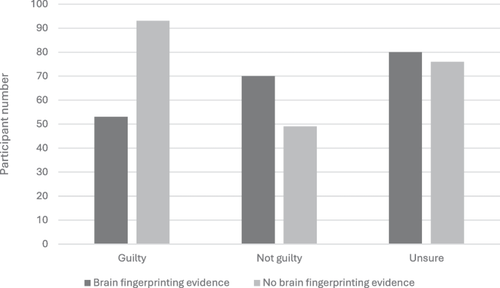Journal of Police and Criminal Psychology Pub Date : 2024-04-17 , DOI: 10.1007/s11896-024-09670-1 Rebecca Wilcoxson , Matthew Browne , Nathan Brooks , Paul Duckett

|
Electroencephalogram (EEG) lie detection is a proposed method of determining criminal culpability, though it is currently unknown how this method will impact juror decisions. The present study investigated the persuasiveness of EEG lie detection with potential Australian jurors. Through a vignette-based experiment, participants (N = 421) were required to make juror-based decisions (i.e. guilty, not guilty and unsure) on a 1989 U.S. trial involving the brutal murder of a young woman. Participants read about forensic evidence (blood, shoeprint and fibre analysis) presented at the 1989 trial that led to the suspect’s conviction. Half of the participants also read about an EEG lie detection test conducted 11 years post-conviction that indicated the convicted man was innocent. Chi-square analysis showed the EEG information significantly affected determinations of guilt. Guilty verdicts were made by 41% of participants who did not read the EEG evidence. However, only 27% of participants who read the EEG evidence voted guilty. The implications of implementing EEG lie detection are discussed.
中文翻译:

脑电图测谎证据和潜在的澳大利亚陪审员
脑电图(EEG)测谎是一种确定刑事责任的提议方法,尽管目前尚不清楚该方法将如何影响陪审员的决定。本研究调查了脑电图测谎对潜在澳大利亚陪审员的说服力。通过基于小插曲的实验,参与者 ( N = 421) 被要求在 1989 年美国一起涉及残酷谋杀一名年轻女子的审判中做出基于陪审员的决定(即有罪、无罪和不确定)。参与者阅读了 1989 年审判中提供的法医证据(血液、鞋印和纤维分析),该证据导致嫌疑人被定罪。一半的参与者还了解到在定罪 11 年后进行的脑电图测谎测试表明被定罪的男子是无辜的。卡方分析显示脑电图信息显着影响有罪感的判定。 41% 的参与者在没有阅读脑电图证据的情况下做出了有罪判决。然而,只有 27% 阅读了脑电图证据的参与者投票有罪。讨论了实施脑电图测谎的含义。



























 京公网安备 11010802027423号
京公网安备 11010802027423号